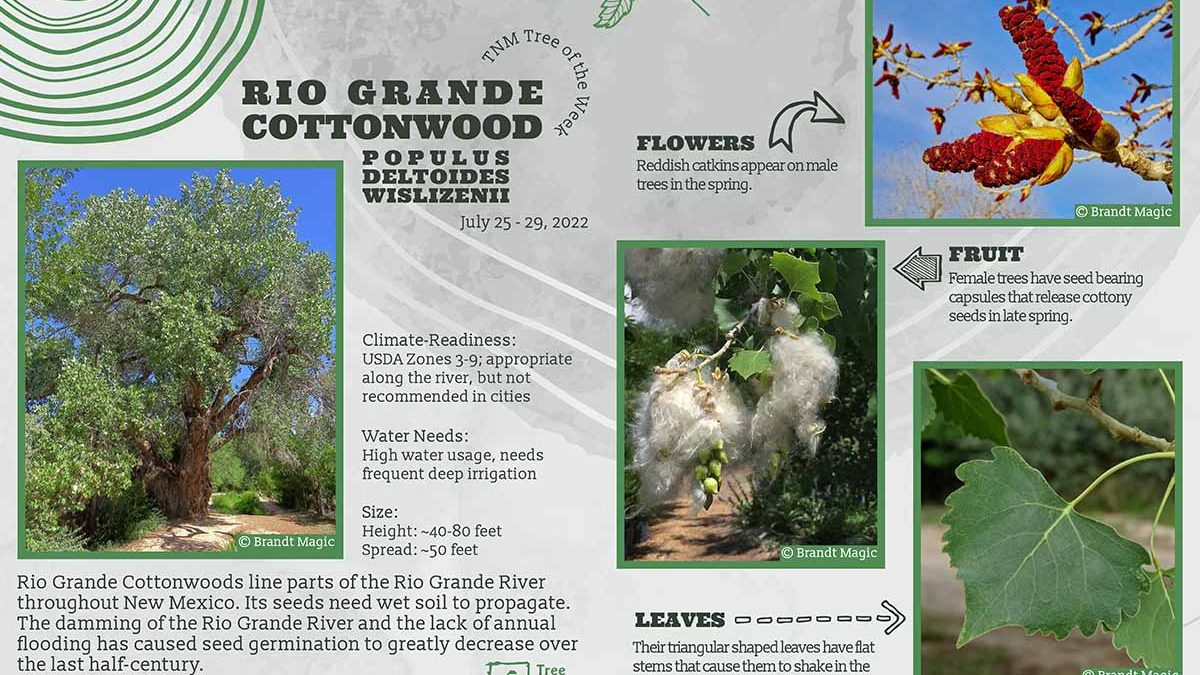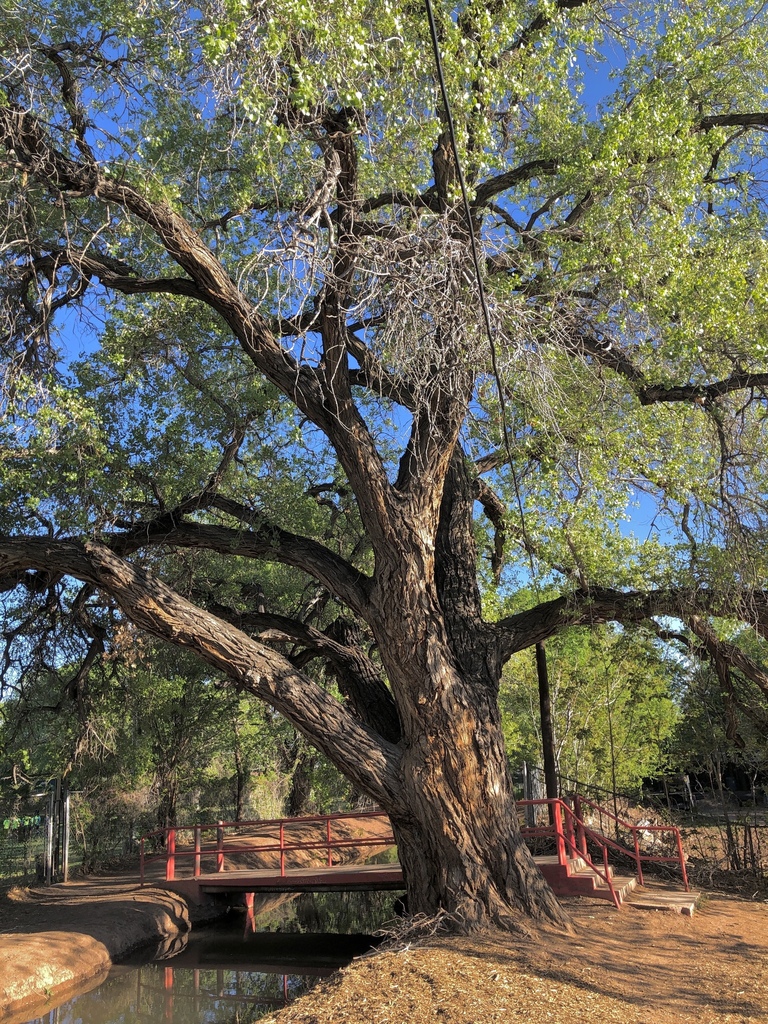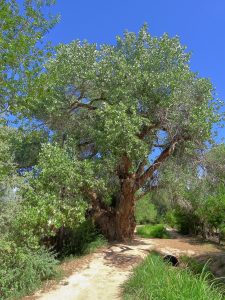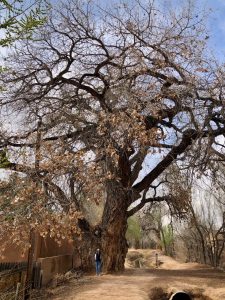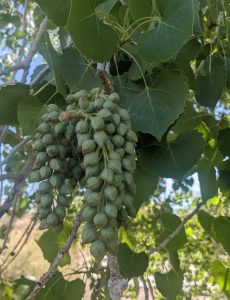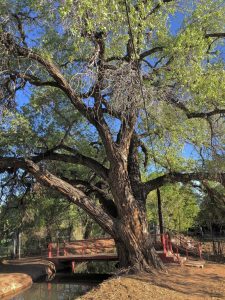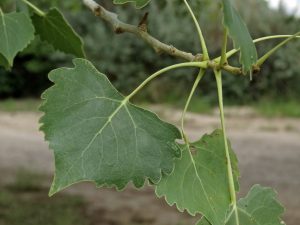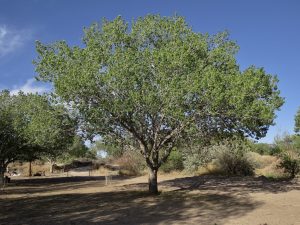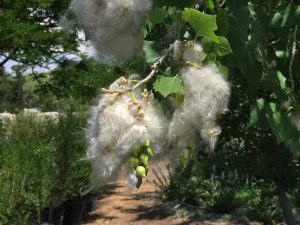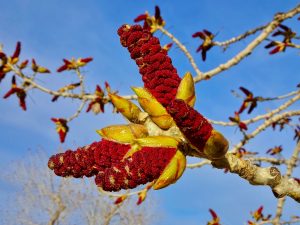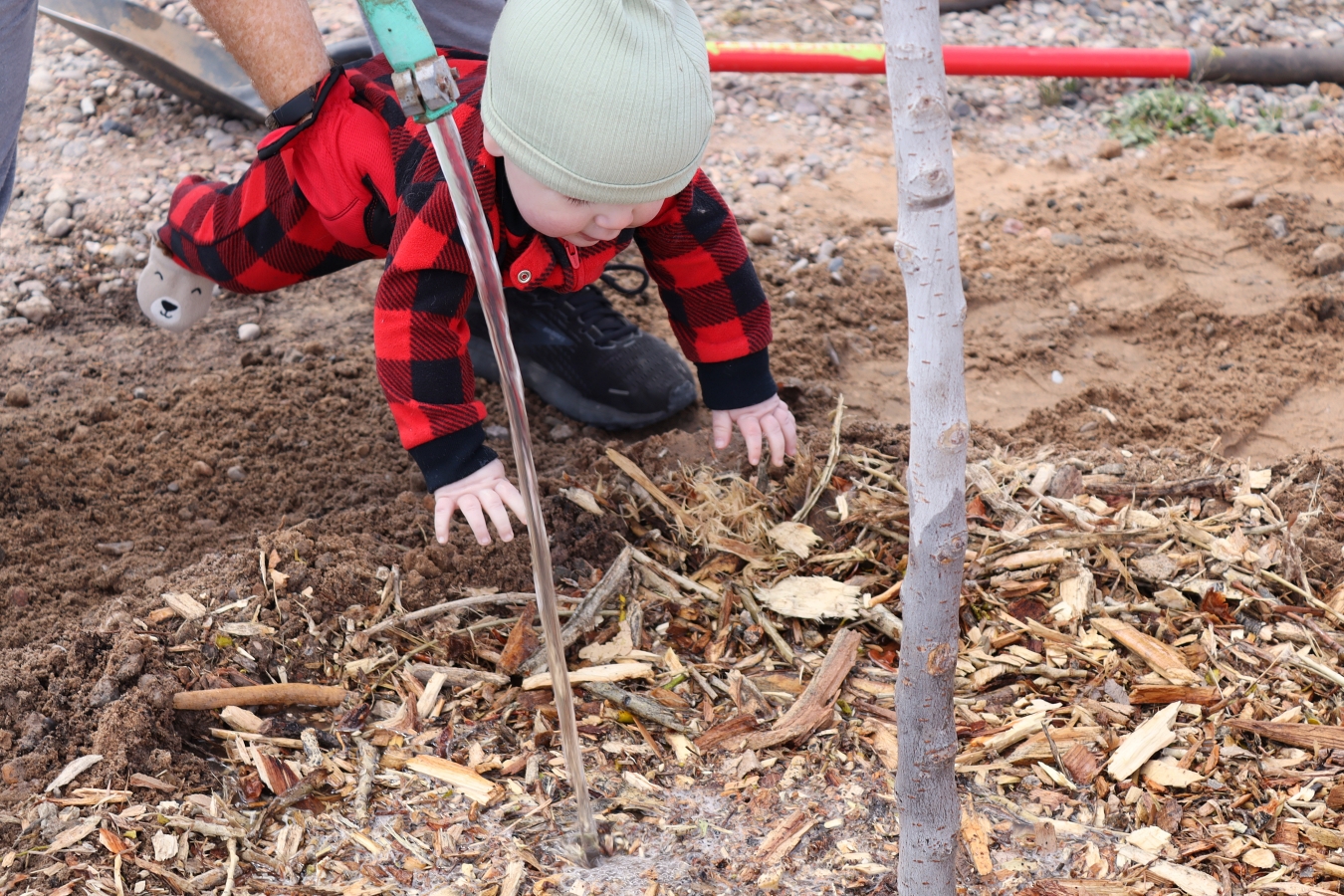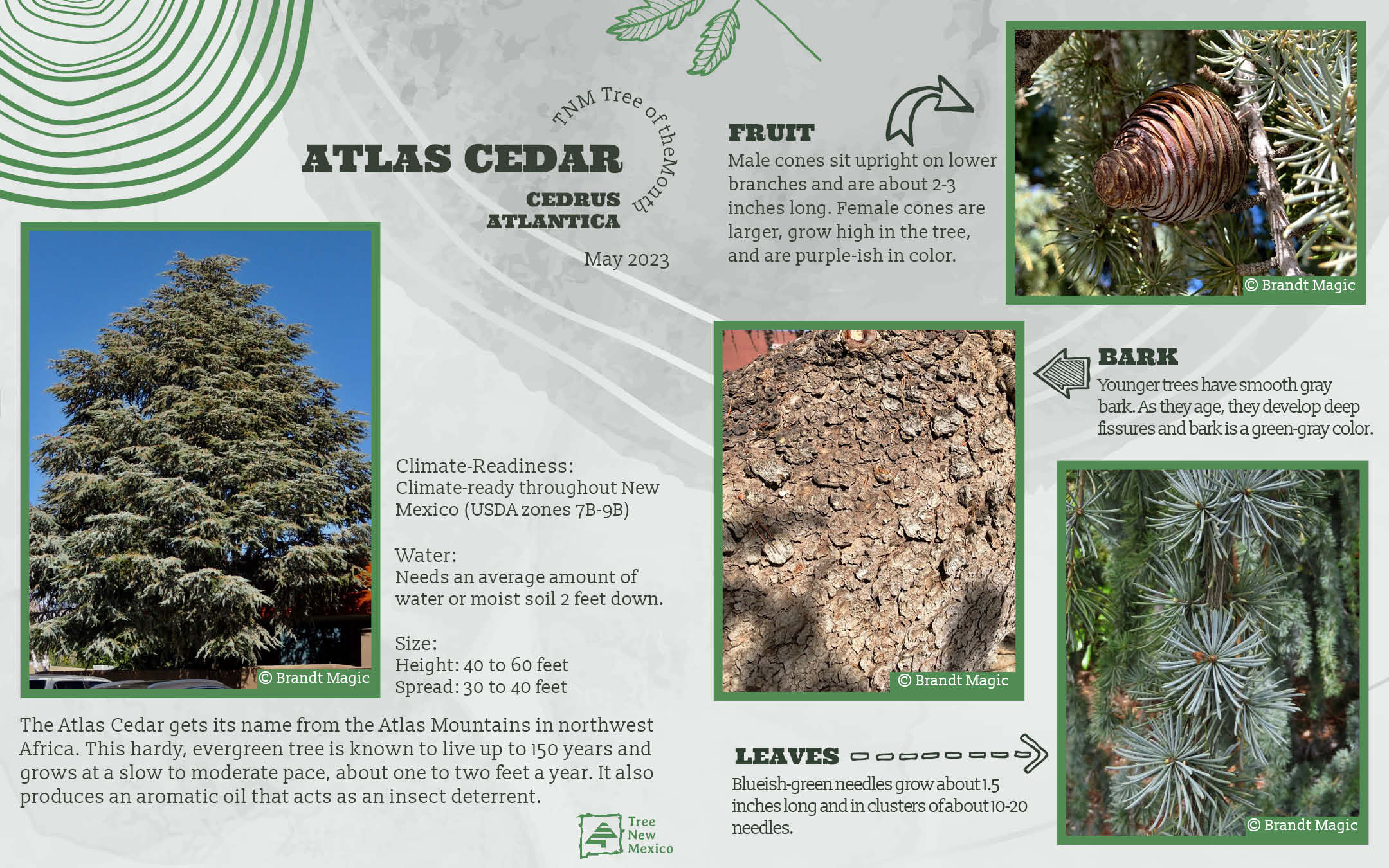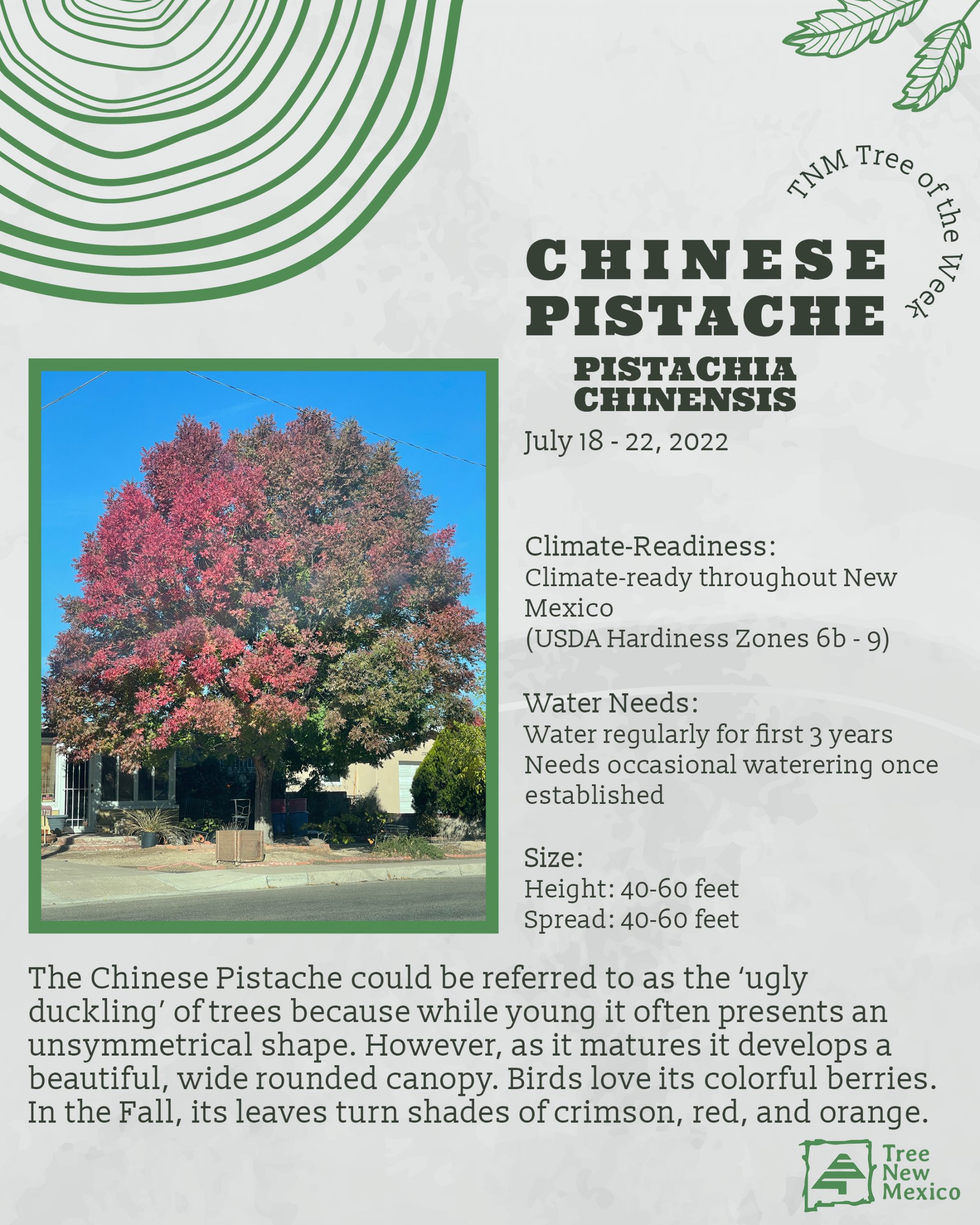
Chinese Pistache
July 19, 2022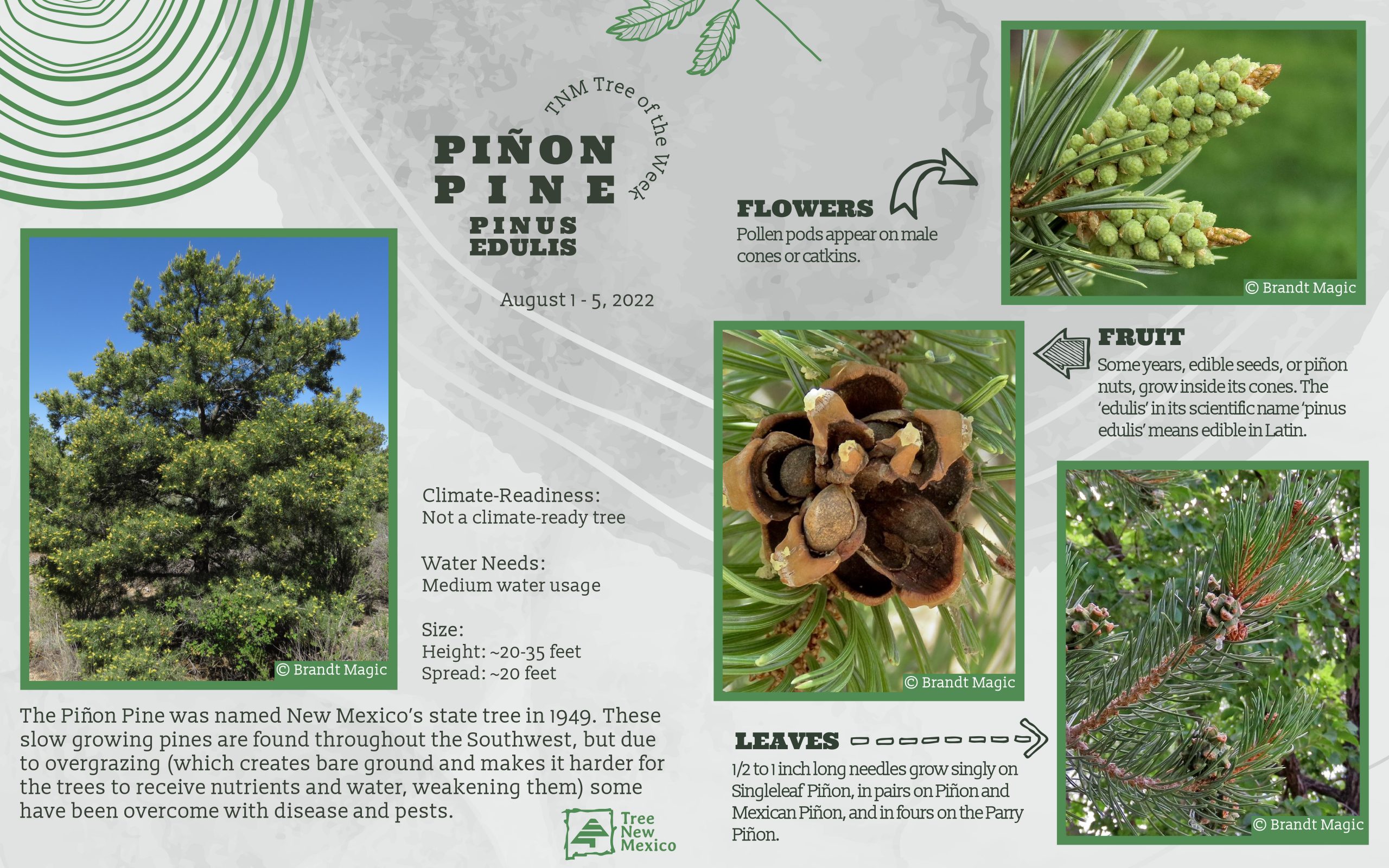
Piñon Pine
August 2, 2022Scientific name: Populus deltoides wislizeni
Alternate names: Usually just referred to as “cottonwood,” or “Alamo” in Spanish.
Description: As the dominant native tree of the Rio Grande Bosque, the cottonwood is among New Mexico’s most beloved trees. It has distinctive heart-shaped leaves and a broad open crown to 50+ feet tall and a trunk diameter up to 5 feet. Like related willows, cottonwoods are easily propagated from cuttings, and are is extensively planted in its native range along irrigation ditches and in parks. Although it is a fast-growing shade tree, it is short-lived.
Bark: On older trees, the bark is thick, deeply furrowed, reddish brown. On branches or on young trees, bark is thin, smooth and gray-brown.
Leaves: Roughly triangular in shape, 2 to 2.5 inches long and 2.5 to 3 inches wide. They are shiny green with a thin yellow midrib, a coarsely toothed margin & a yellow, flattened stem that causes the leaf to shake back & forth in the wind. Leaves turn bright yellow in autumn.
Flowers: Catkins 2 to 3 1/2 inches long, reddish; male and female on separate trees in early spring. Flowers are edible.
Fruits: Multiple 1/2 inch long, egg-shaped, seed bearing capsules in a clump, hairless, light brown, maturing in spring, splitting into 3 or sometimes 4 parts with many cottony seeds.
Habitat: River valleys and arroyos in deserts, grasslands & woodlands. Cottonwoods need a high water table to survive and soaking wet soil to establish from seed. Since the construction of Cochiti Dam which brought an end to the Rio Grande’s natural floods, cottonwoods seeds can no longer germinate germinate naturally. Young cottonwoods are rare, and as the older trees die, they are increasingly being replaced by non-native species like Russian olive, tamarisk, and Siberian elm that thrive in consistently dry conditions.
Range: This tree occurs along the Rio Grande from Mexico to southern Colorado and in the San Juan basin in northwest New Mexico and southwest Colorado.
Height: 40 to 80 feet
Elevation: Up to 6500 feet. At higher elevations, Rio Grande cottonwood intergrades into narrowleaf cottonwood (Populus angustifolia).
Water Requirements: Moderate-High. Rio Grande cottonwood grows only on wet soil and is an indicator of a high water table. In the desert, it needs weekly watering during hot weather if roots cannot tap the water table.
Wildlife: Cottonwoods are a keystone species supporting much of the New Mexico’s wildlife. Leaves feed nearly 200 caterpillar species, which in turn are food for birds. Porcupines take shelter in the trees and eat their bark and leaves. Beavers feed on the bark and build dams with the branches. Hollows in larger trees provide nesting sites for owls. Horses gnaw the sweetish bark.
Issues: We don’t recommend planting cottonwoods in most yards. Their huge, magestic limbs are weak and often drop, and their shallow root system will heave pavement, so cottonwoods are best planted far from buildings and sidewalks.
- Rio Grande Cottonwood in Summer (Ⓒ Brandt Magic)
- Rio Grande Cottonwood in Winter (Ⓒ Brandt Magic)
- Rio Grande Cottonwood Seeds (Ⓒ Rachel Hendrix)
- Rio Grande Cottonwood (Ⓒ Brandt Magic)
- Rio Grande Cottonwood Leaves (Ⓒ Brandt Magic)
- Rio Grande Cottonwood (Ⓒ Brandt Magic)
- Rio Grande Cottonwood Seeds and Cotton (Ⓒ Brandt Magic)
- Rio Grande Cottonwood Flowers (Ⓒ Brandt Magic)

